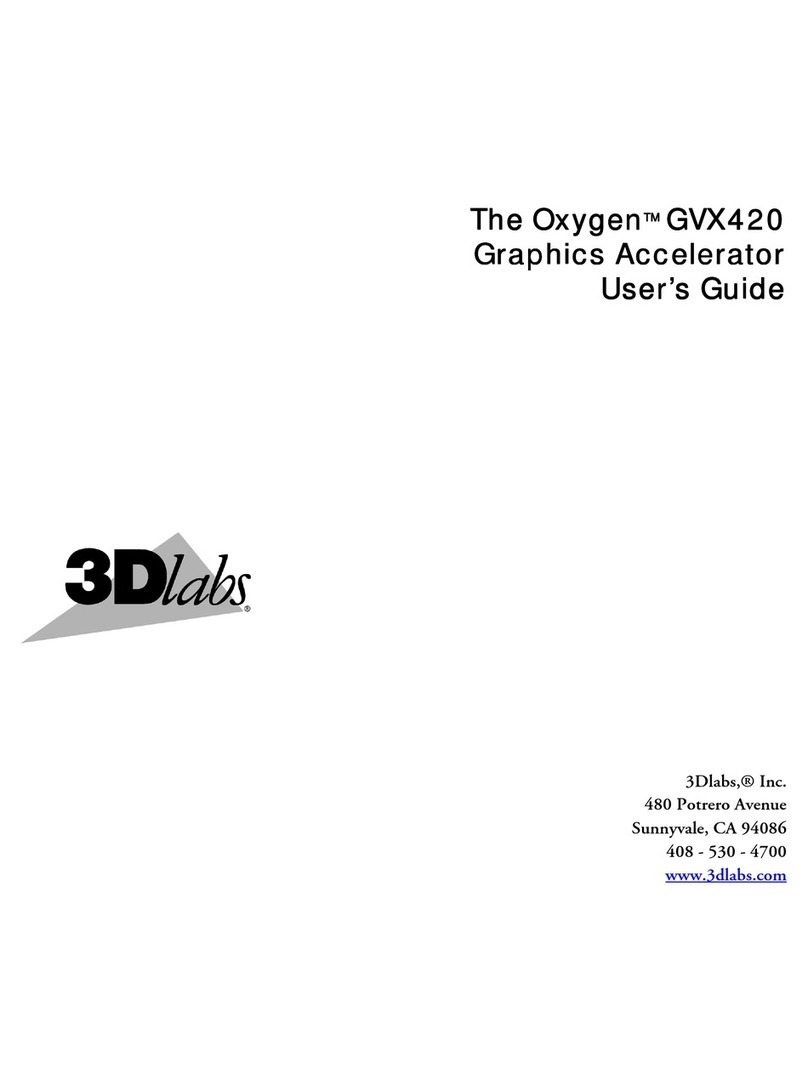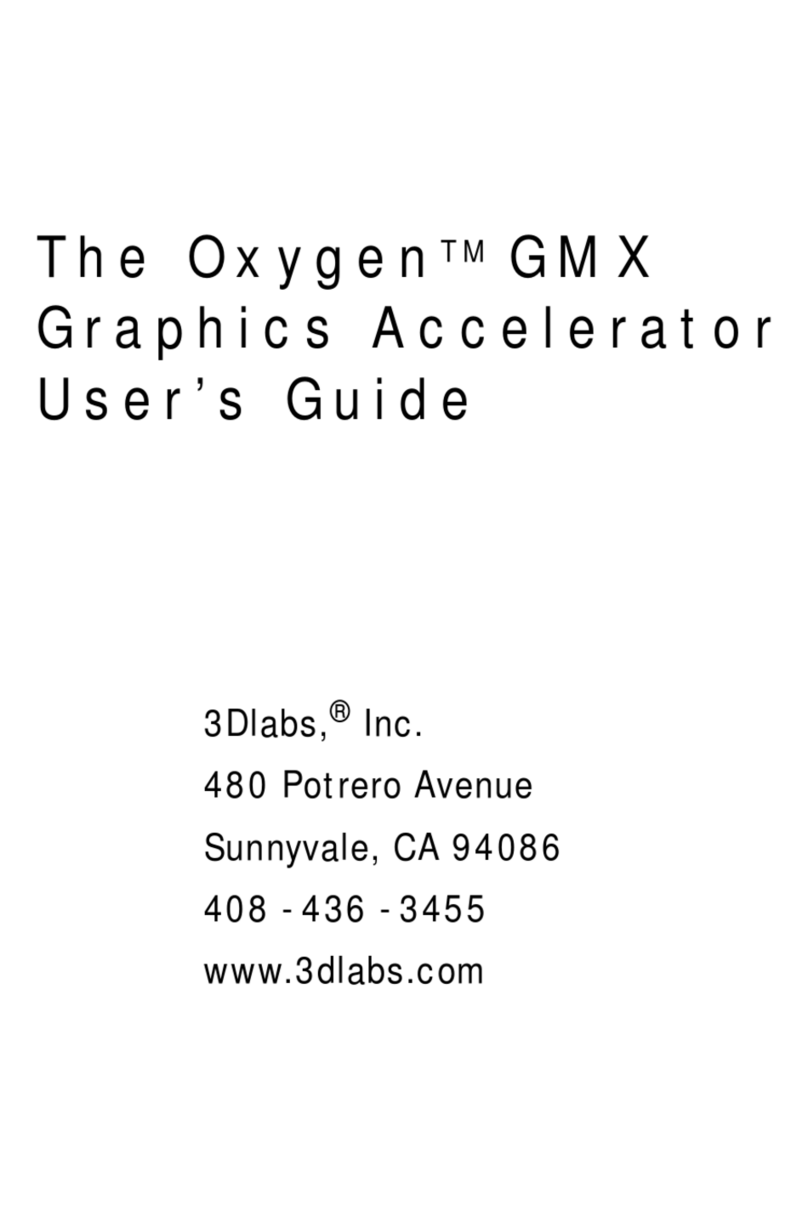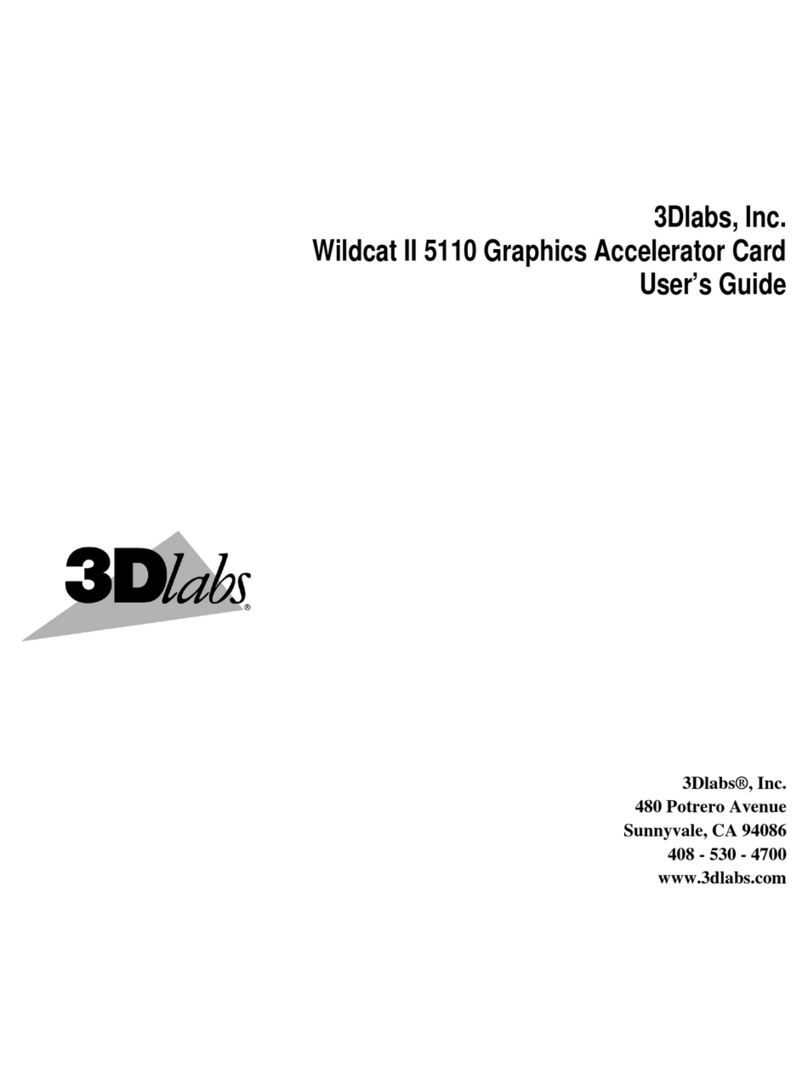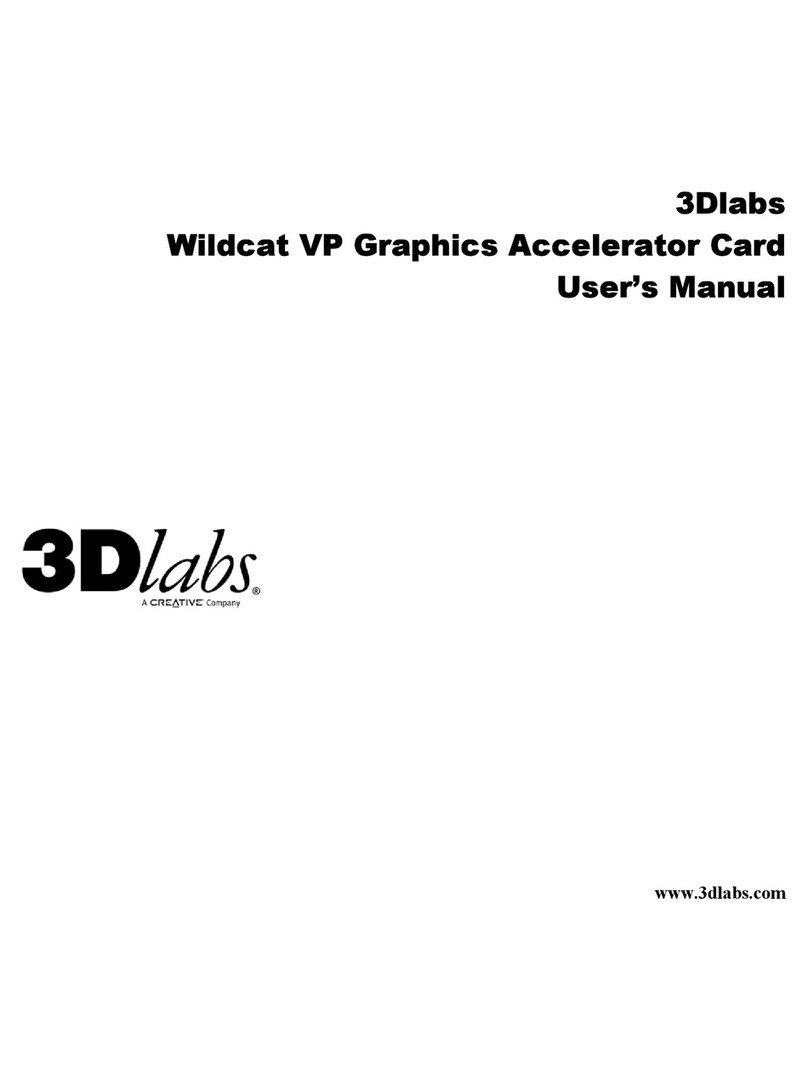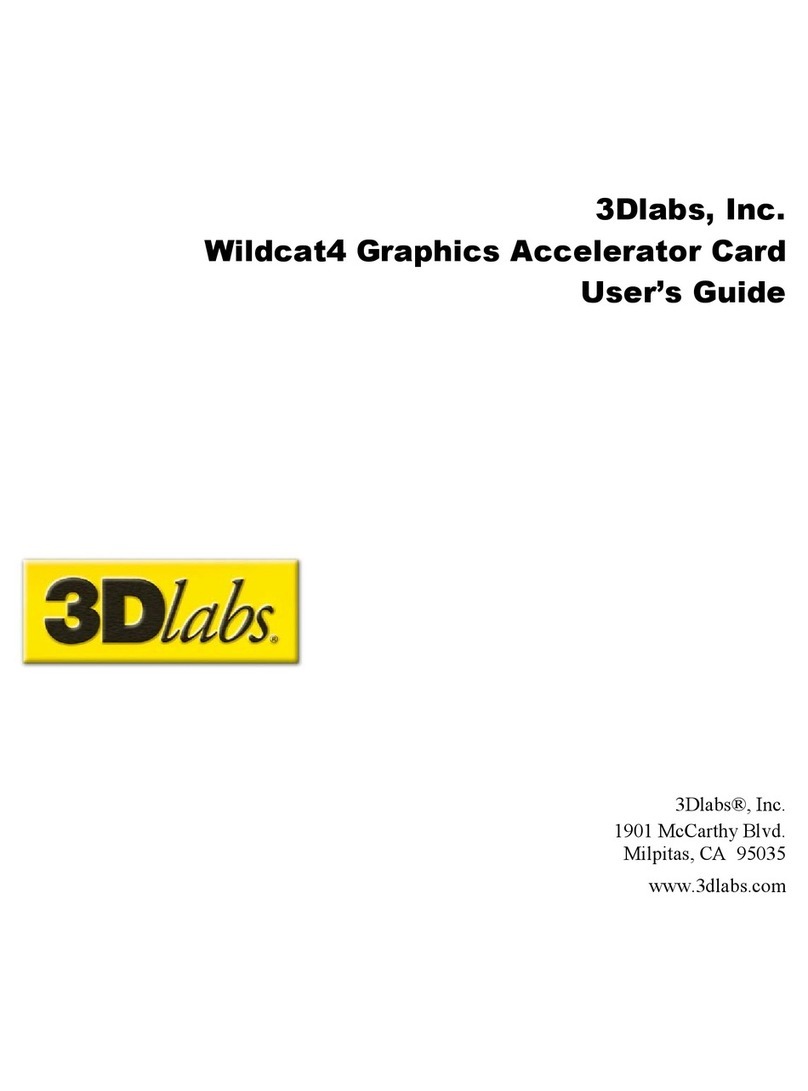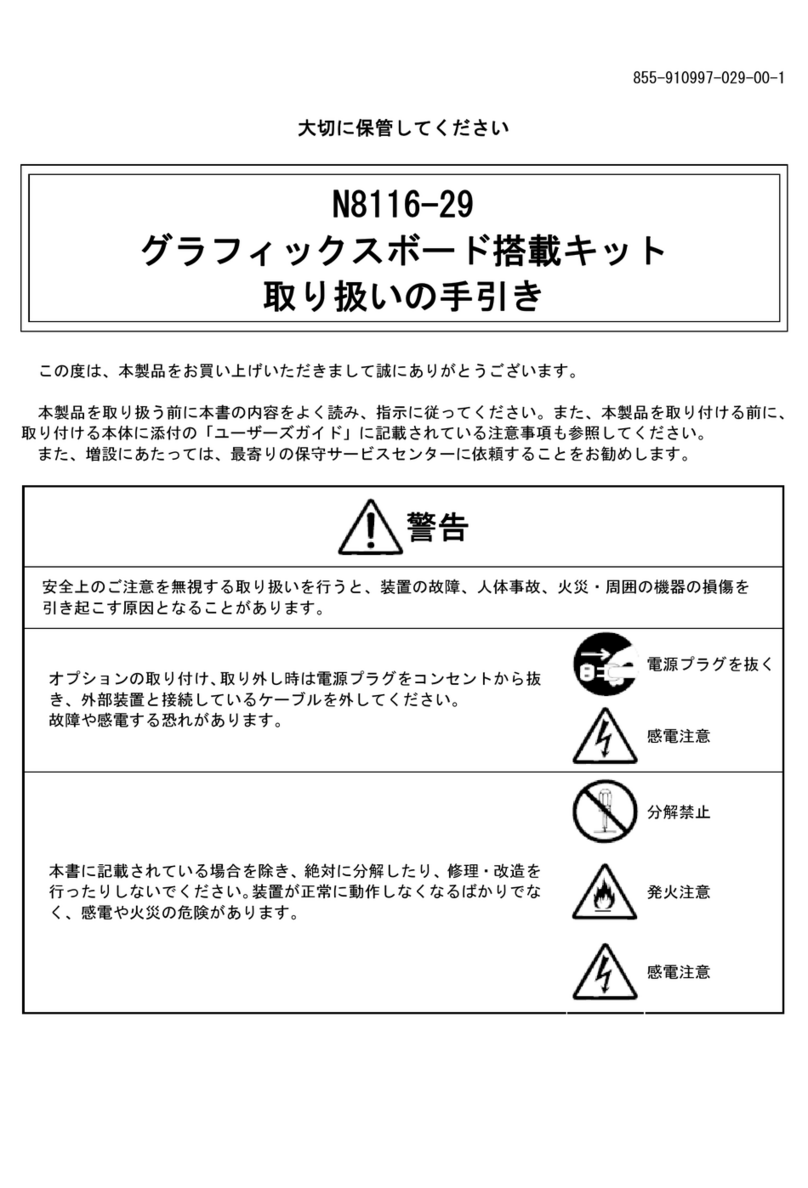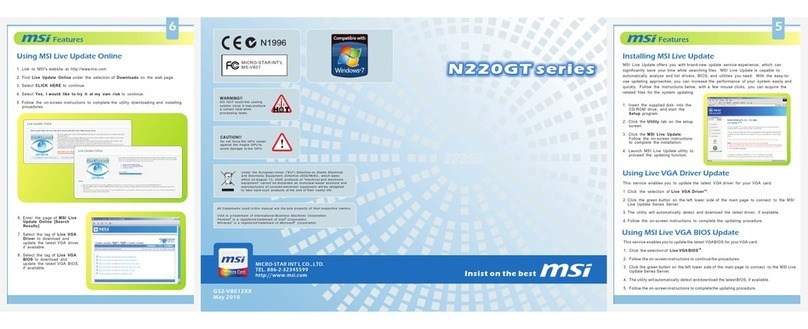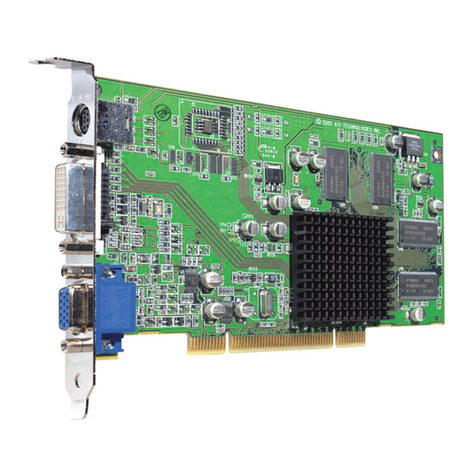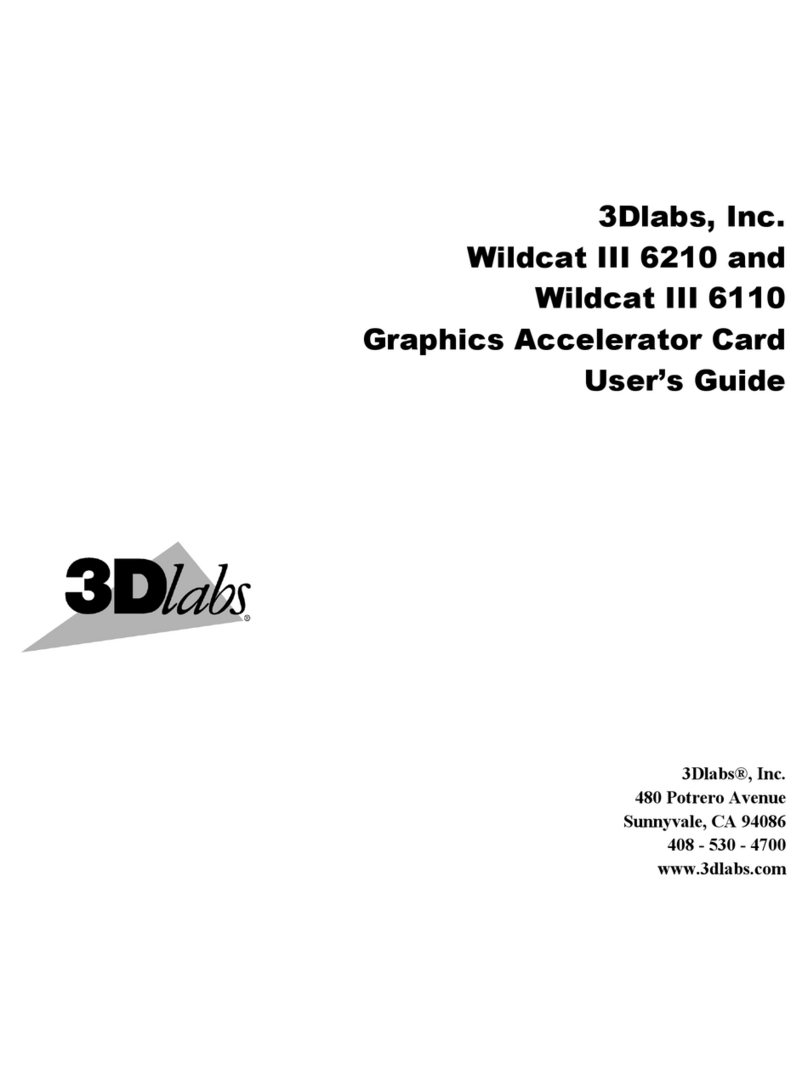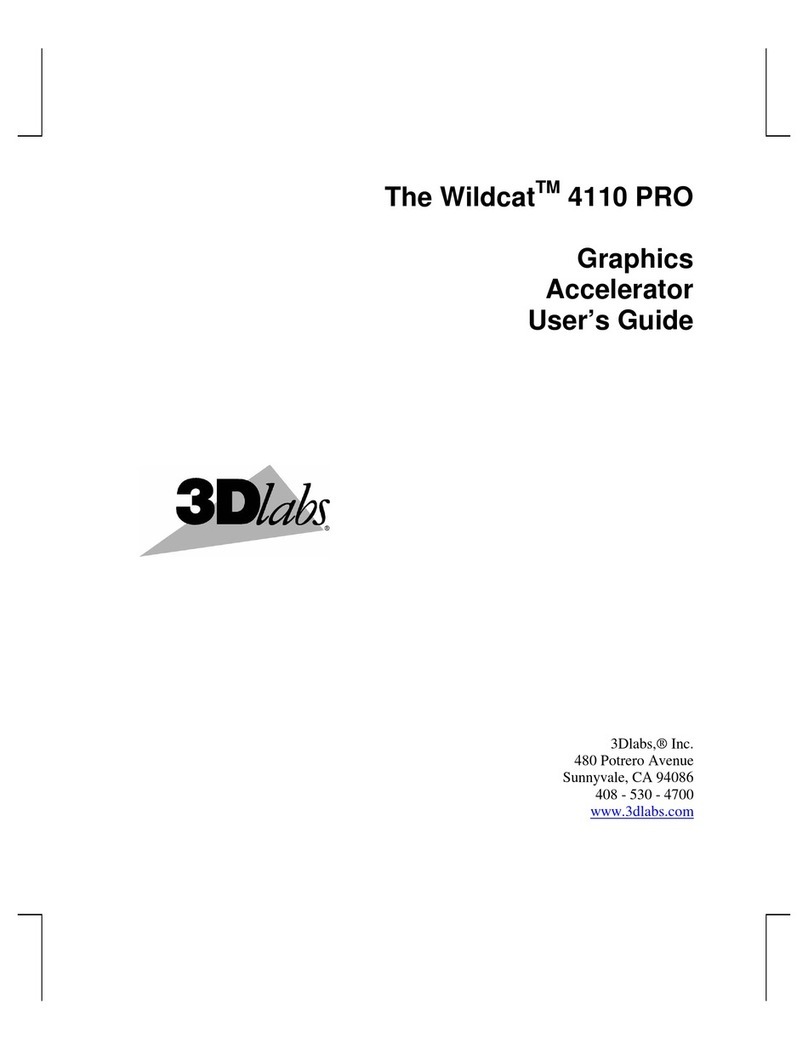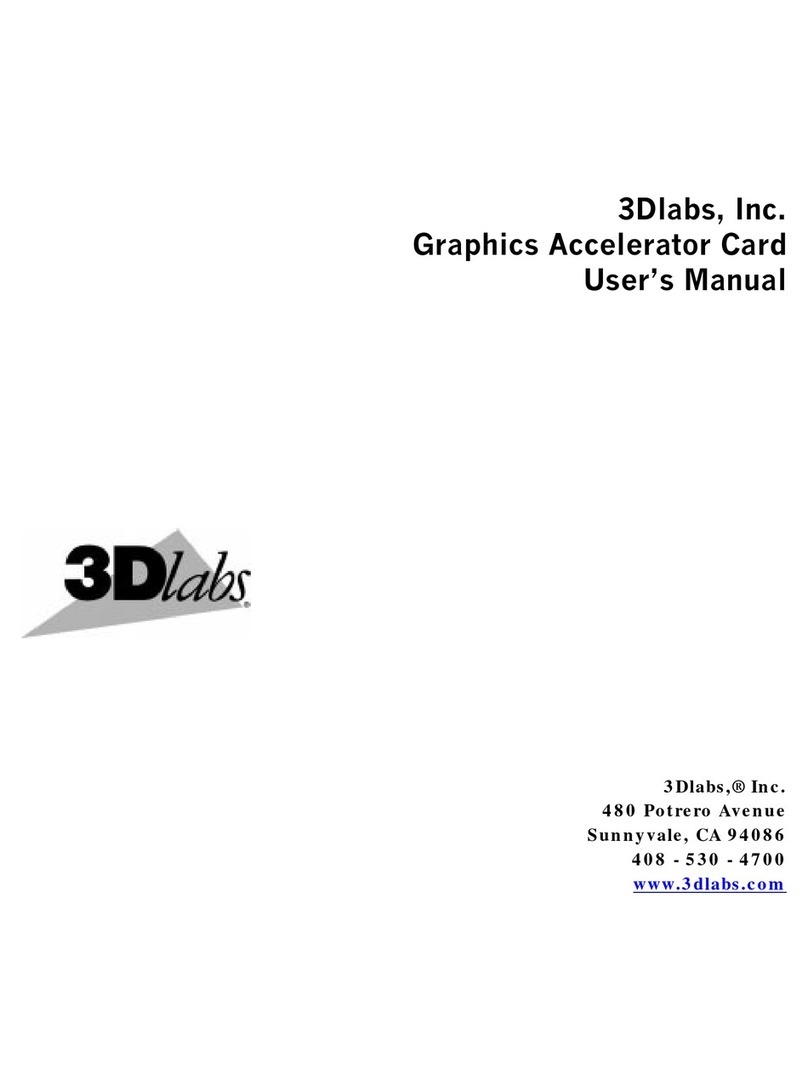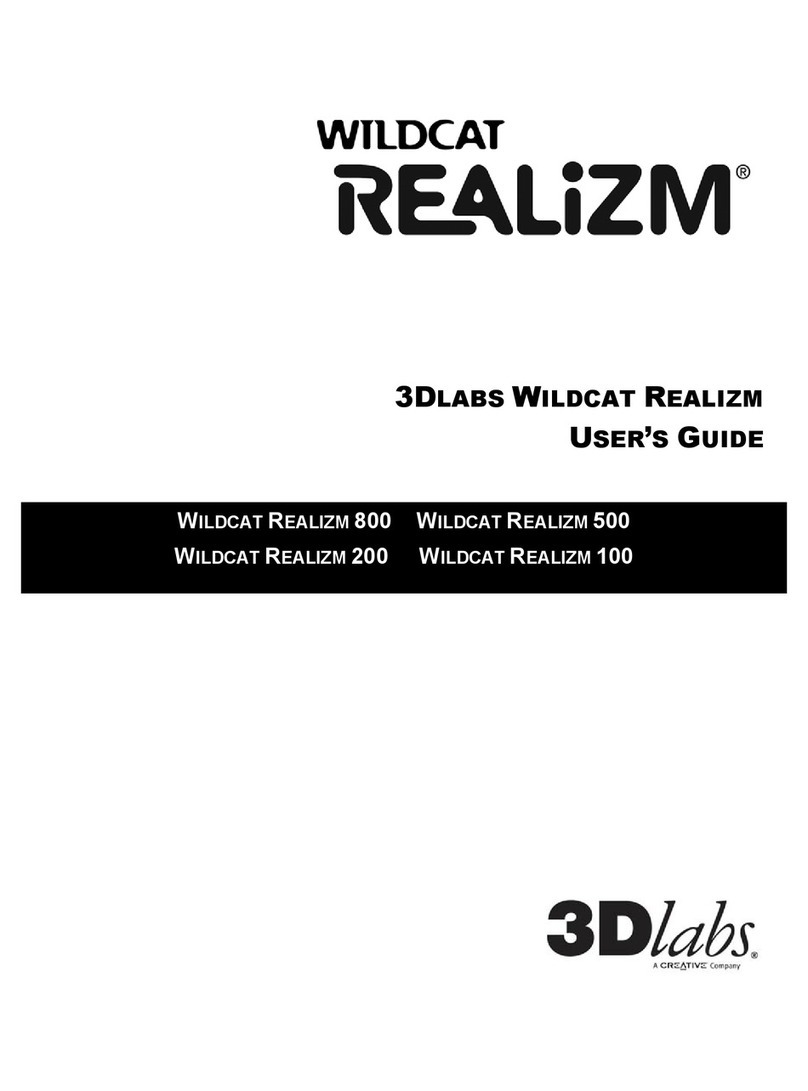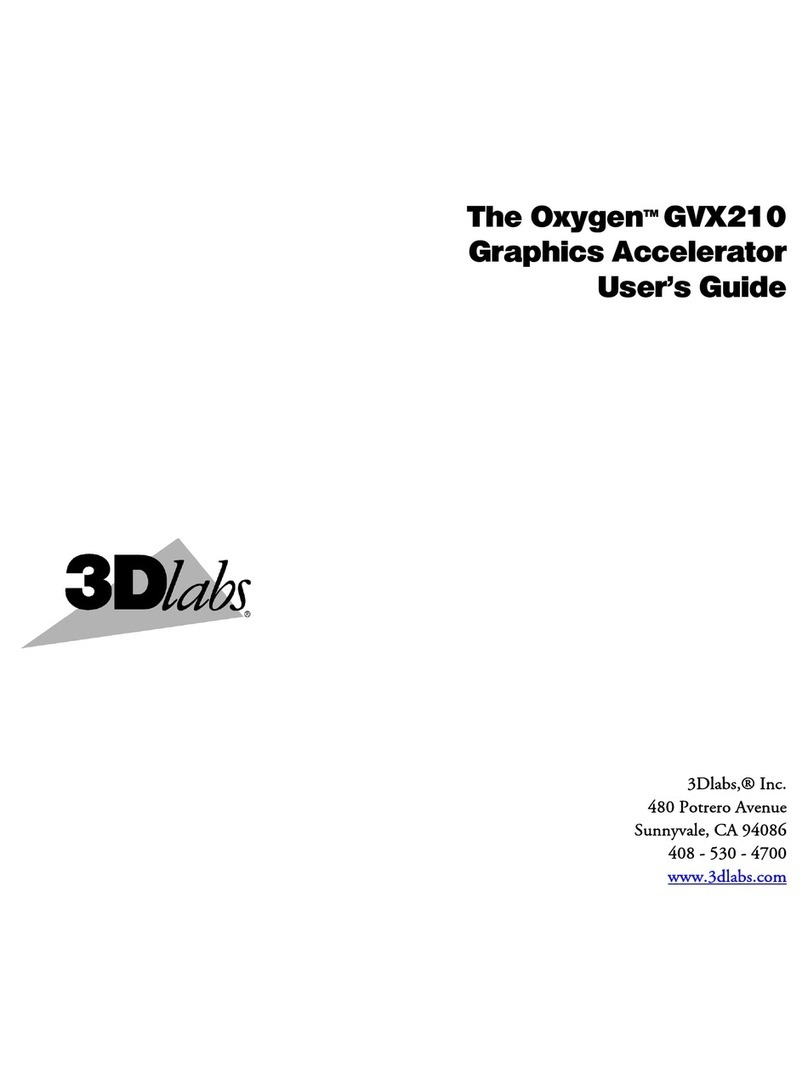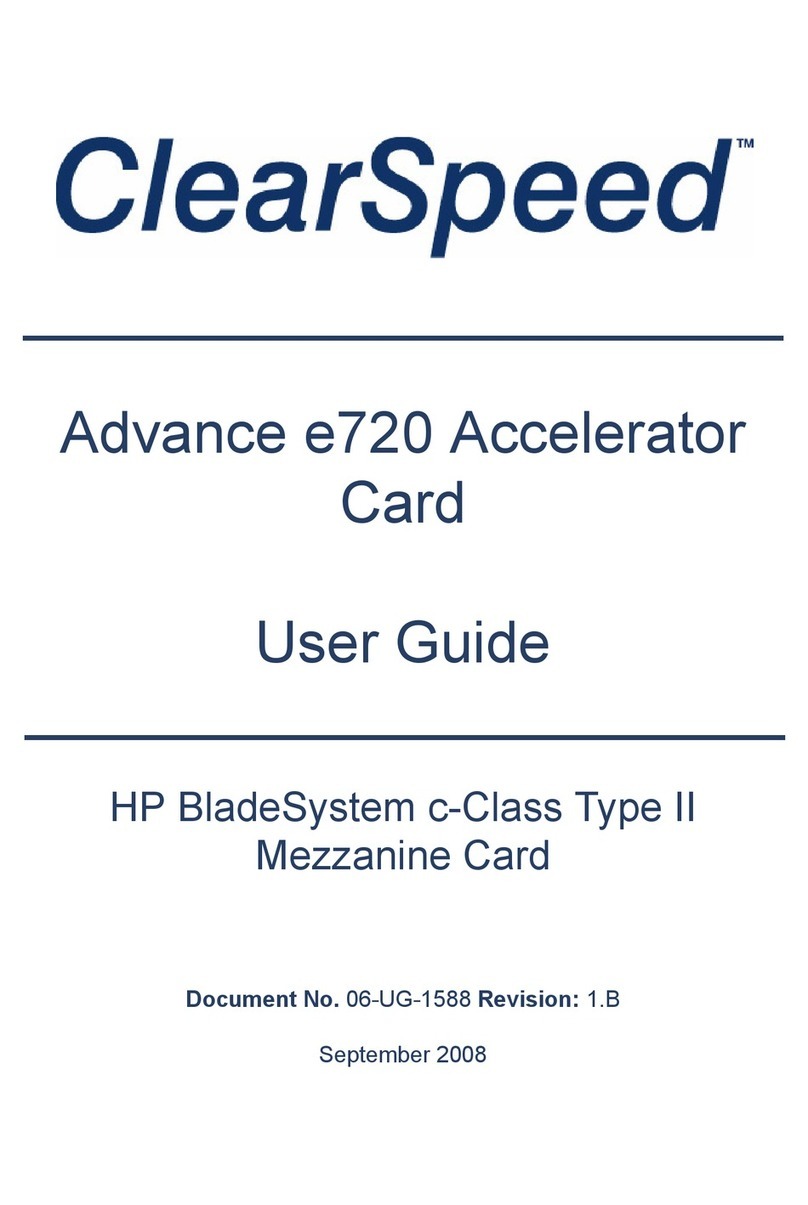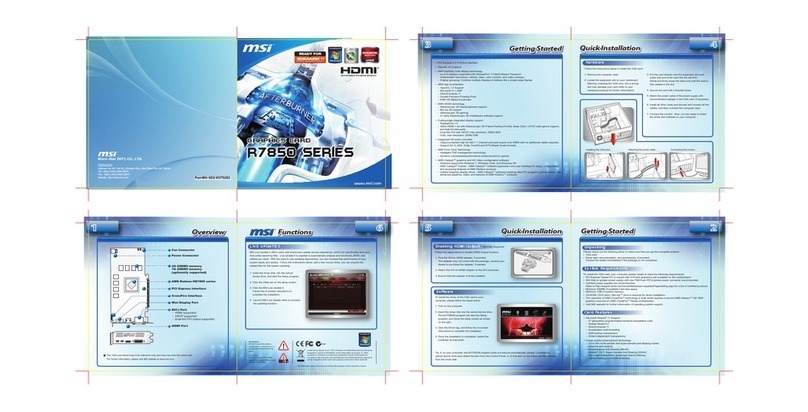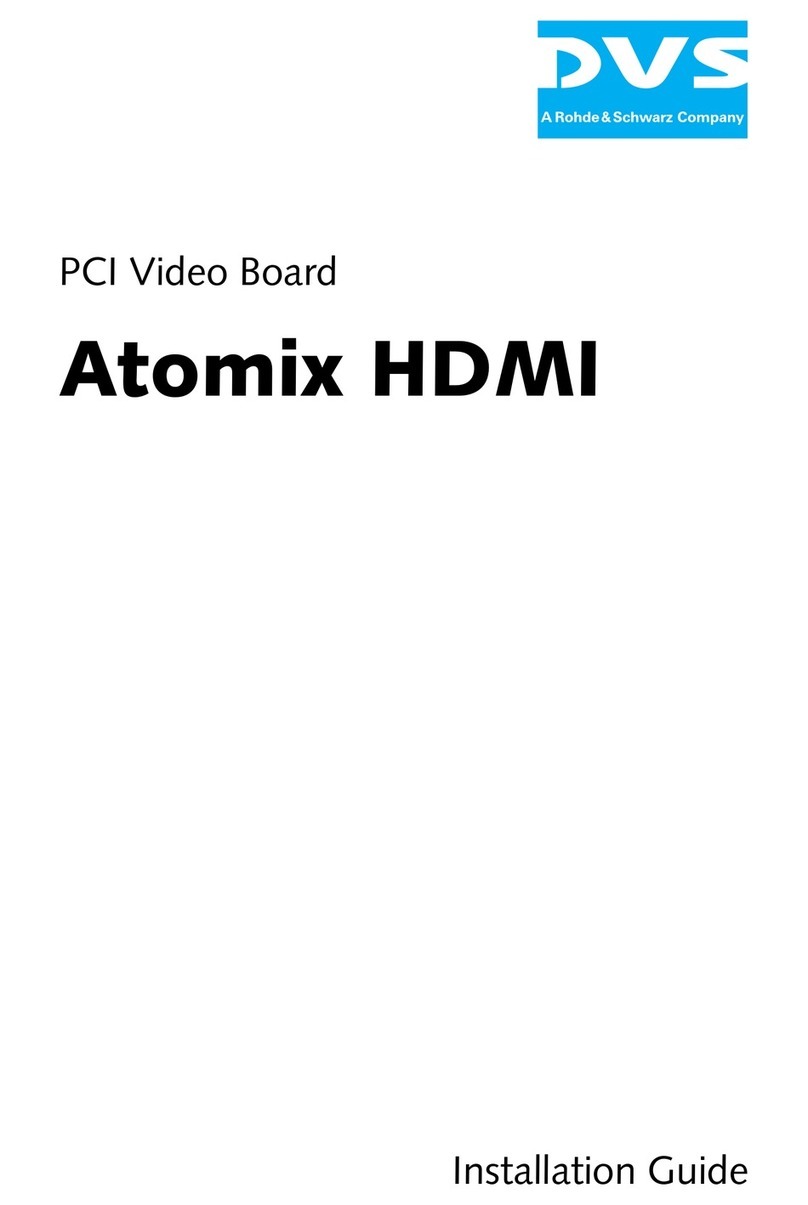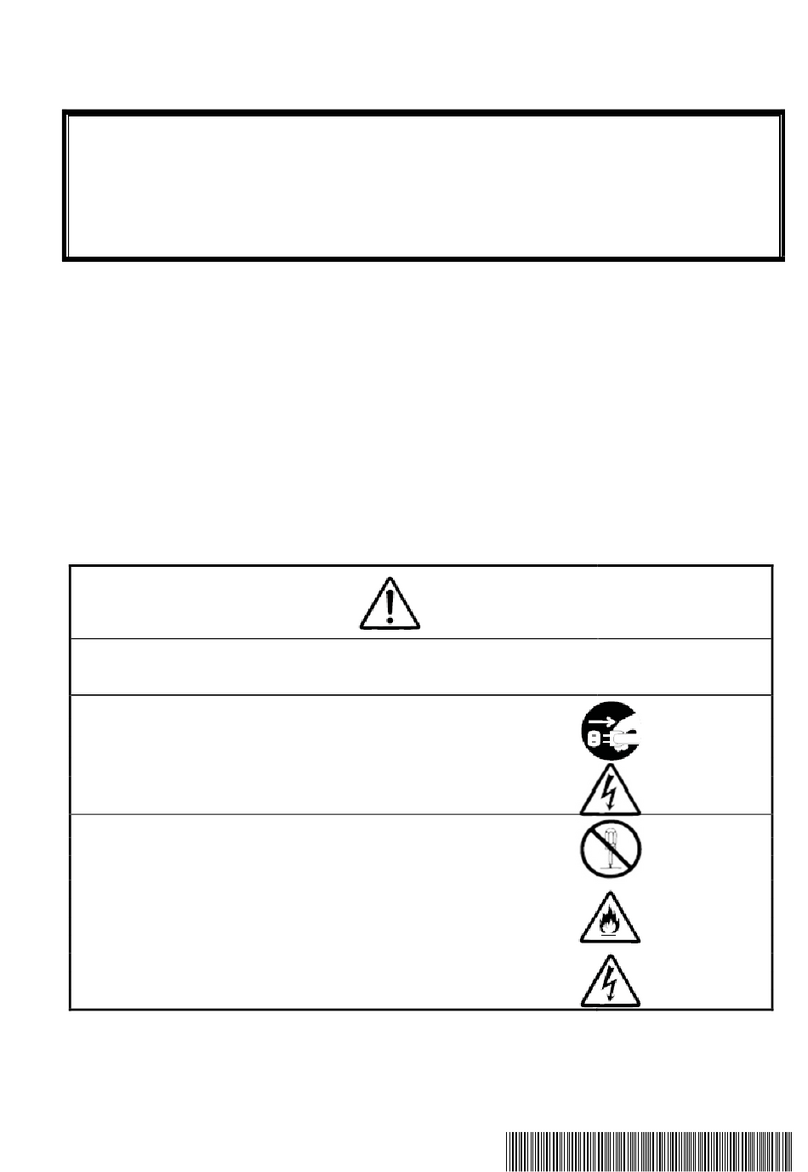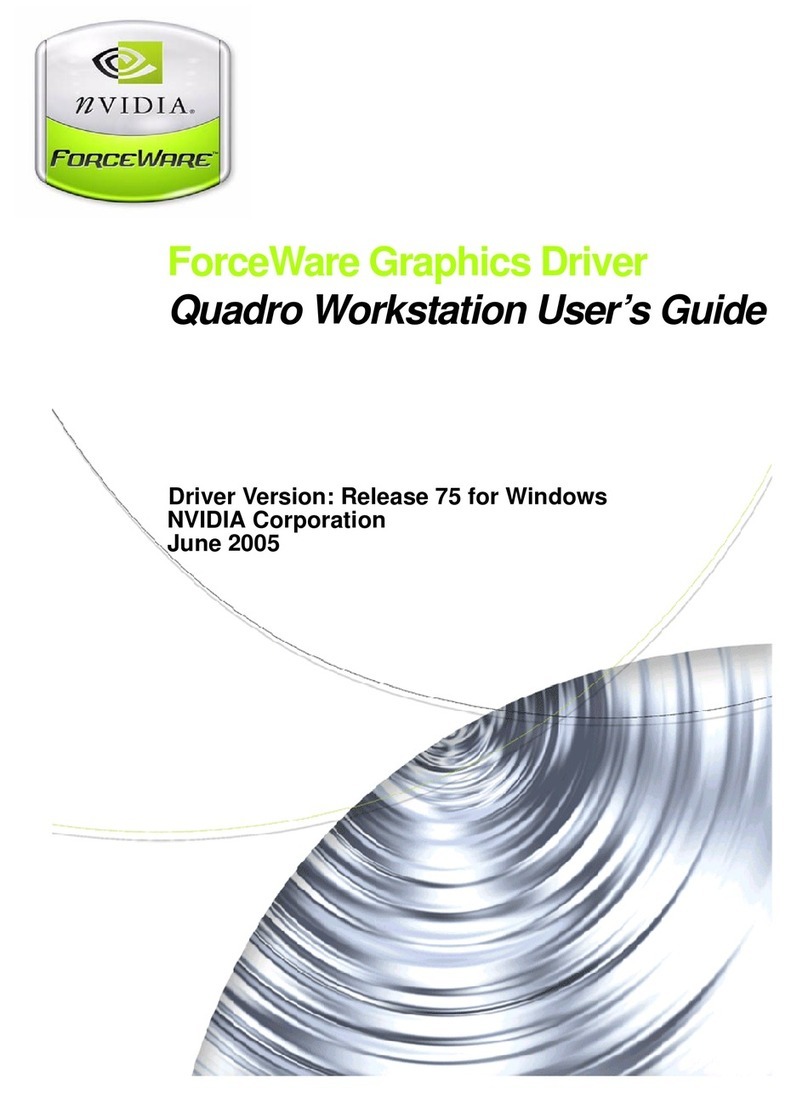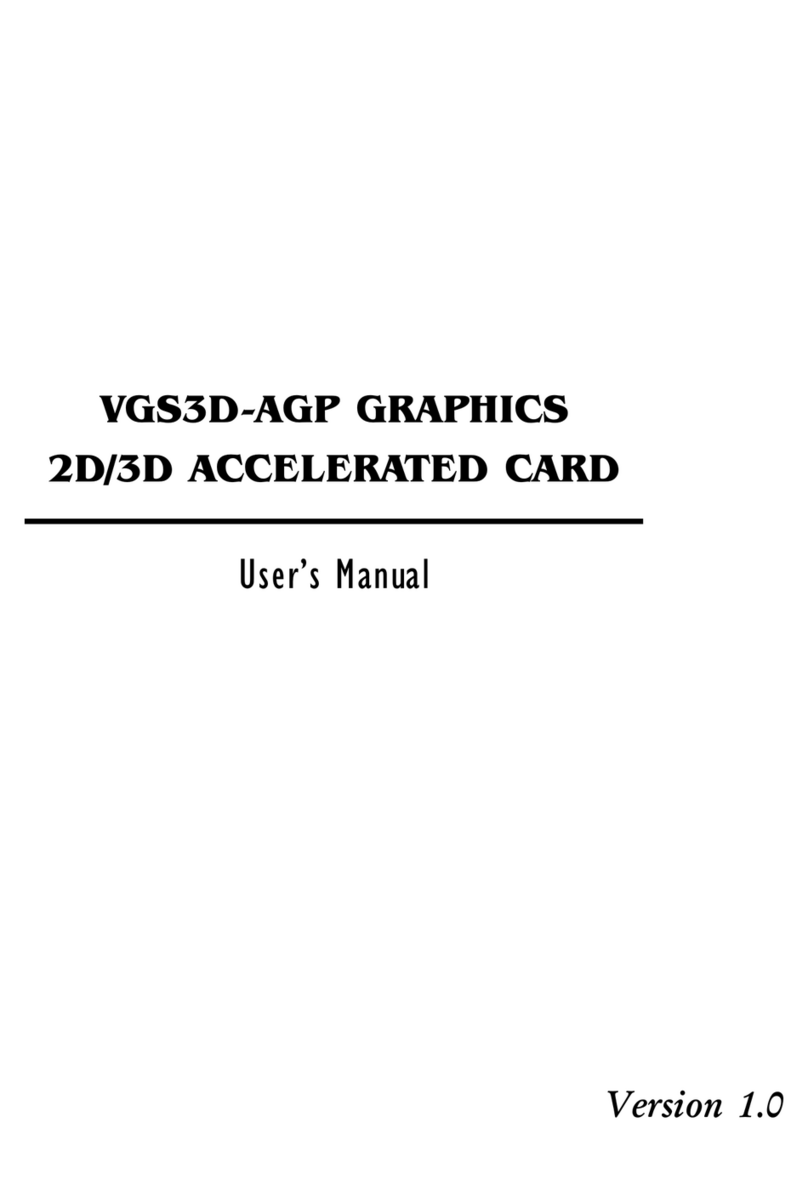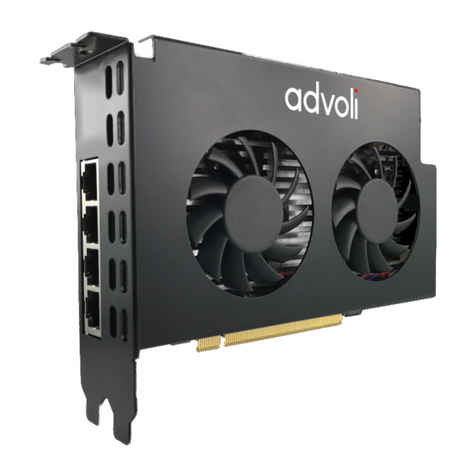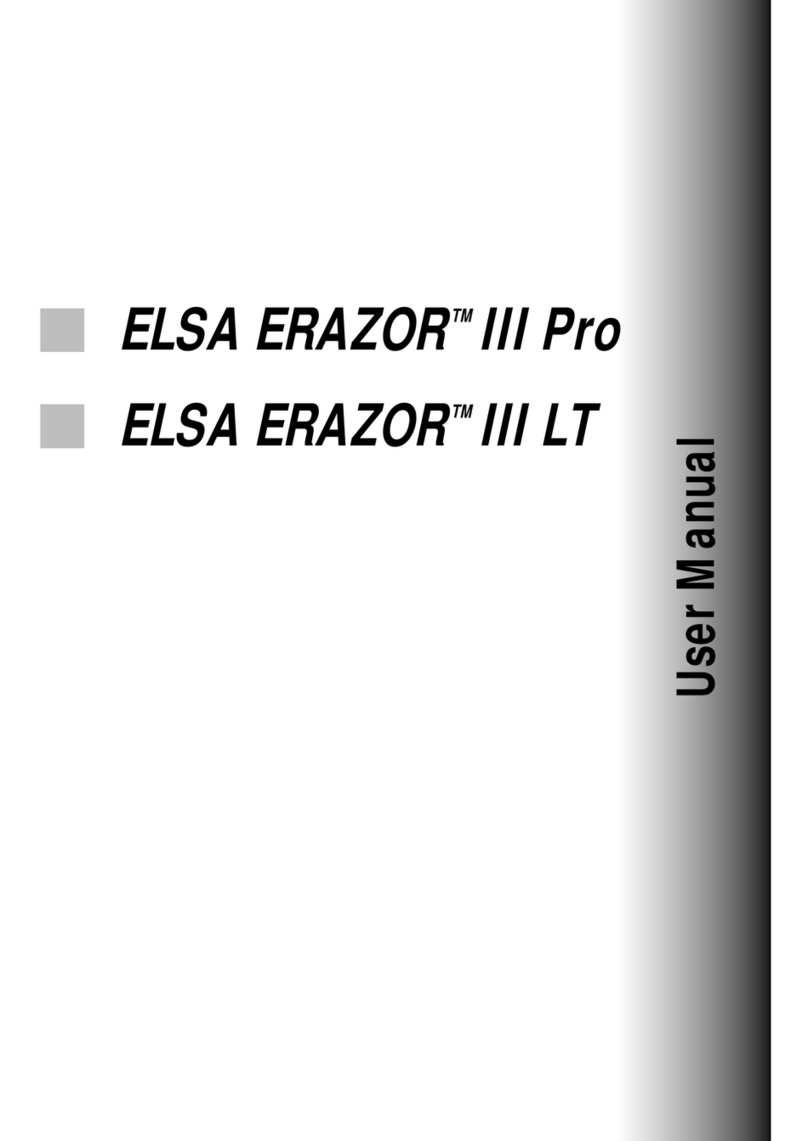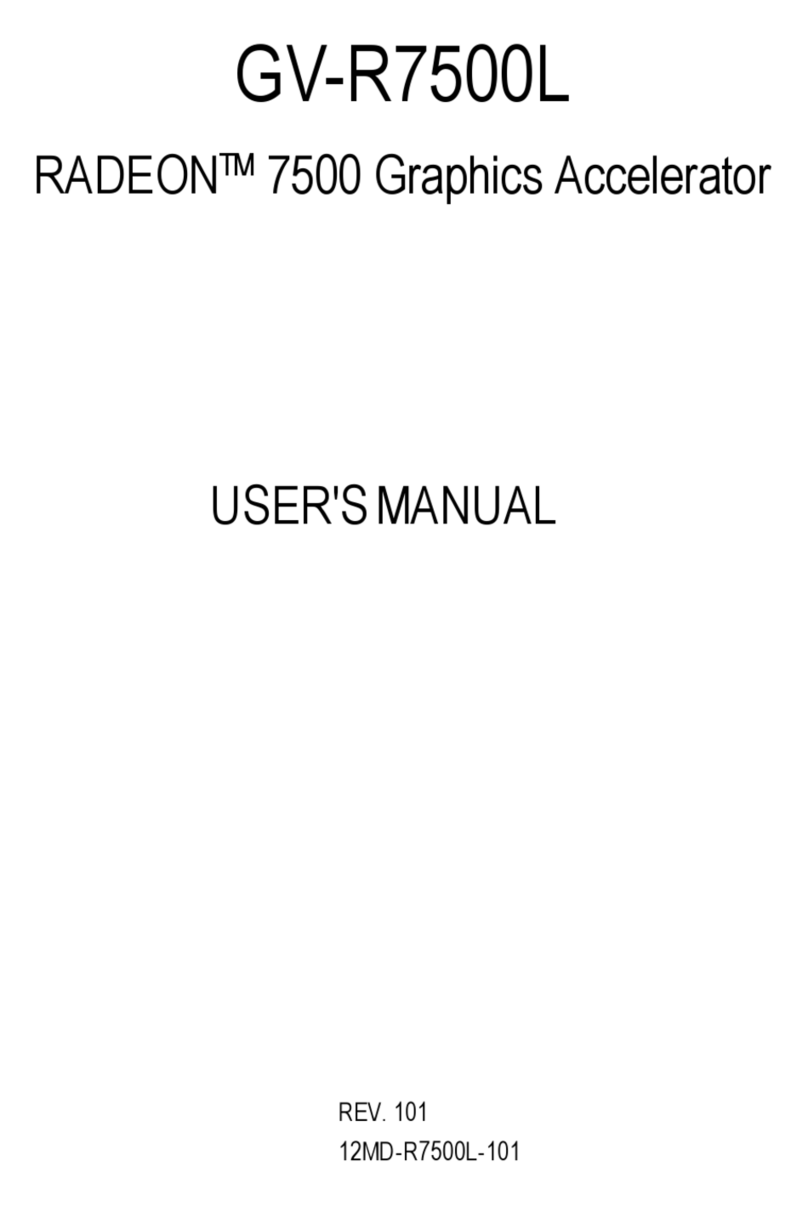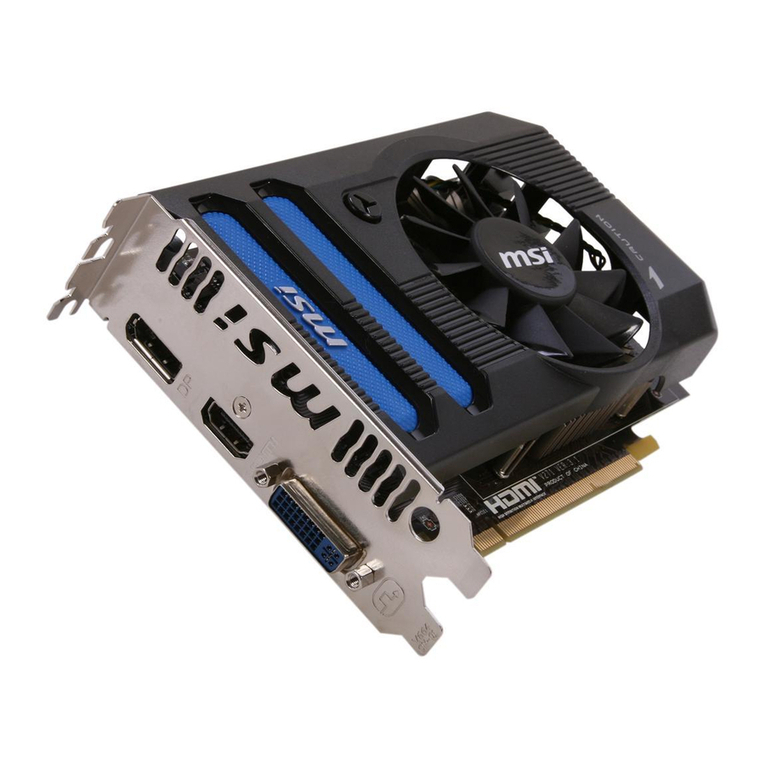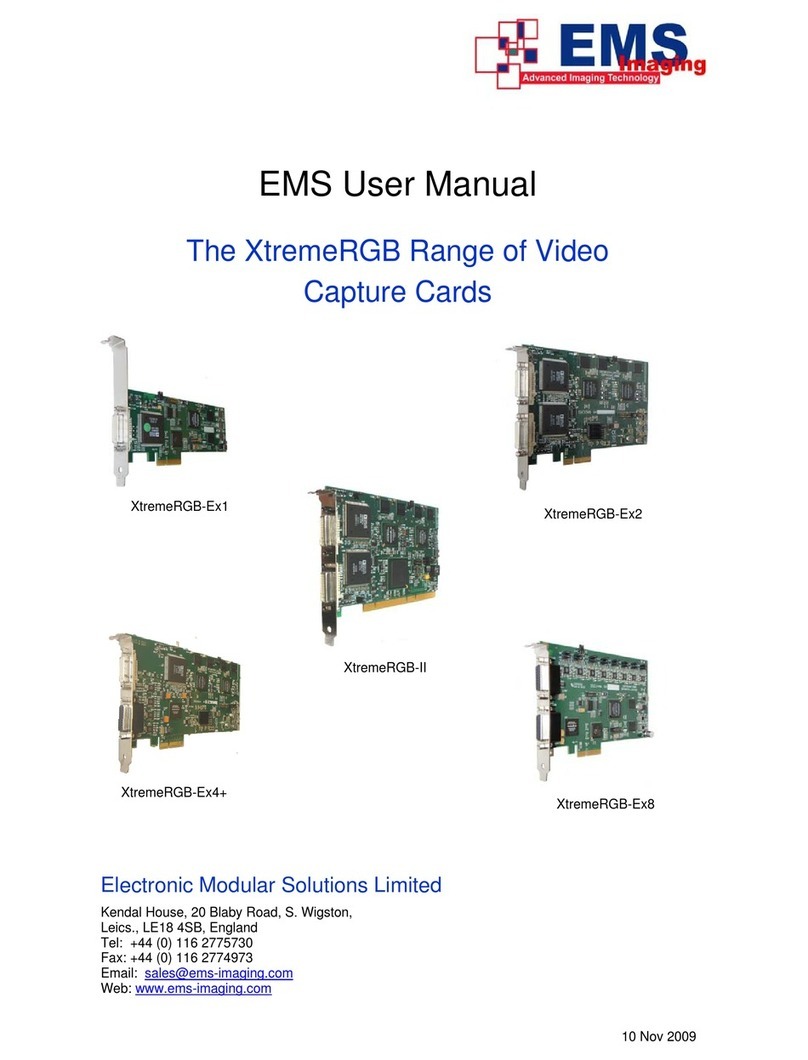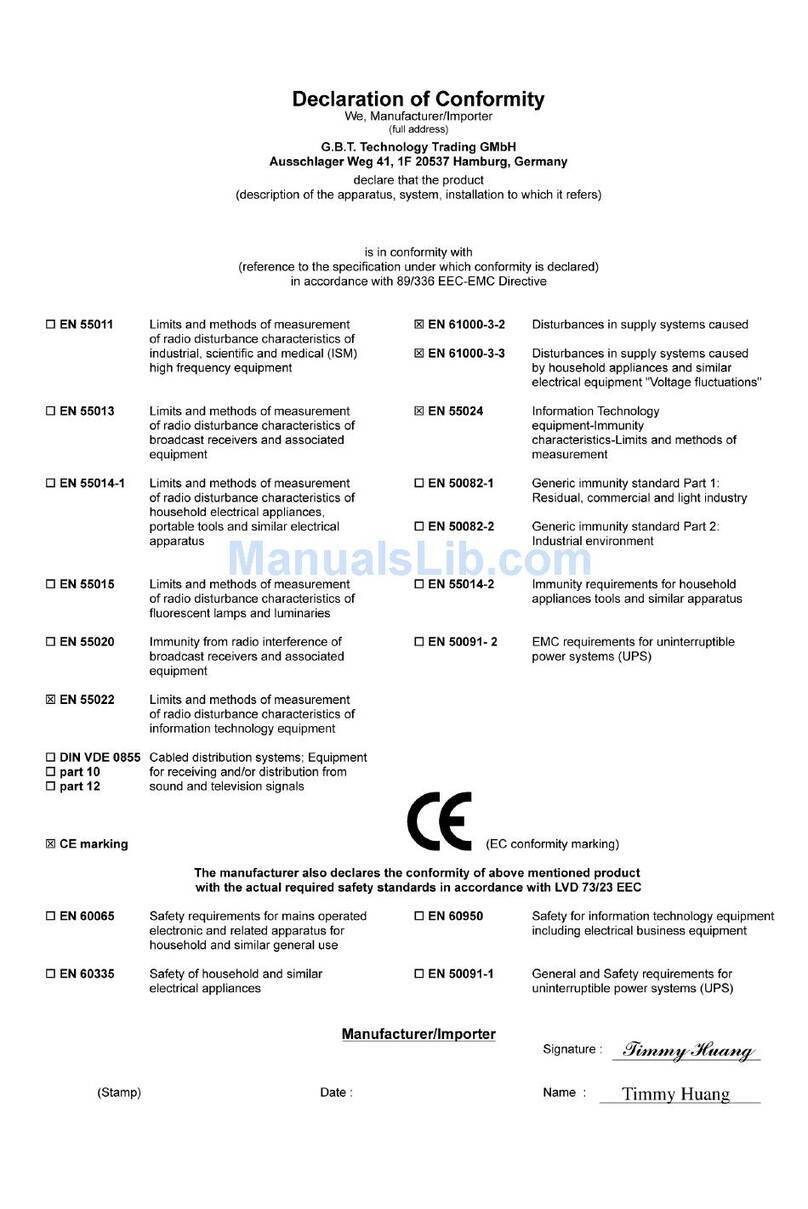
Copyright 1999 by 3Dlabs, Inc.
3Dlabs and Permedia are registered trademarks, and Oxygen is a trademark of 3Dlabs, Inc. or 3Dlabs Inc. Ltd.
Pentium is a registered trademark of Intel. OpenGL is a registered trademark of Silicon Graphics, Inc. Soft
Engine is a trademark of Vibrant Graphics, Inc. AutoCAD is a registered trademark of AutoDesk Inc.
Microsoft and Windows NT are registered trademarks of the Microsoft Corporation. All other trademarks and
registered trademarks are the property of their respective holders.
Caution: Changes or modifications to the Oxygen ACX graphics accelerator card not expressly approved by
3Dlabs, Inc. void the user’s warranty.
FCC Notice: This equipment has been tested and found to comply with the limits for a Class B digital device,
pursuant to Part 15 of the FCC Rules. These limits are designed to provide reasonable protection against
harmful interference in a residential installation. This equipment generates, uses, and can radiate radio
frequency energy. If product is not installed and used in accordance with the instruction manual, it may cause
harmful interference to radio communications; however, there is no guarantee that interference will not occur
in a particular installation. If this equipment does cause harmful interference to radio or television reception,
which can be determined by turning the equipment off and on, the user is encouraged to try to correct the
interference by one or more of the following measures:
1. Re-orient or relocate the receiving antenna.
2. Increase the separation between the equipment and receiver.
3. Connect the equipment to an outlet on a circuit different from that to which the receiver is connected.
4. Consult 3Dlabs or an experienced radio/TV technician for assistance.
Compliance with FCC Rules requires that a shielded cable be used to connect to other equipment. This device
complies with Part 15 of the FCC Rules. Operation is subject to the following two conditions: 1) this device
may not cause harmful interference, and 2) this device must accept any interference received, including
interference that may cause undesired operation.
This Class B digital apparatus meets all the requirements of the Canadian Interference-Causing Equipment
Regulations. Cet appareil num_rique de la classe B respecte toutes les exigences du R_glement sur le mat_rial
brouilleur du Canada.
3Dlabs, Inc. makes no representation that the use of its products in the manner described in this publication
will not infringe on existing or future patent rights, nor do descriptions contained in this publication imply the
granting of licenses to make, use, or sell equipment or software in accordance with the description.


